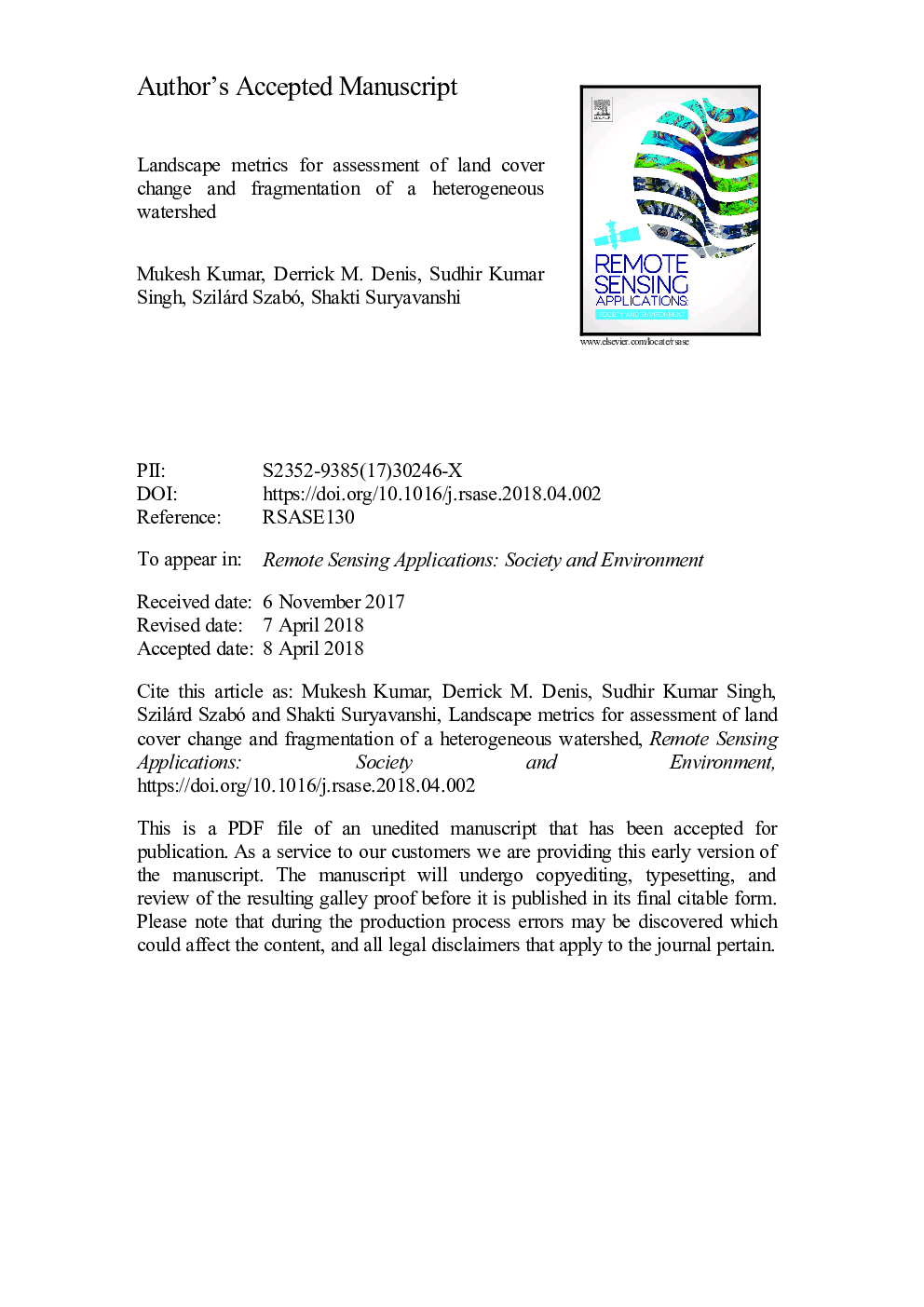| Article ID | Journal | Published Year | Pages | File Type |
|---|---|---|---|---|
| 8866355 | Remote Sensing Applications: Society and Environment | 2018 | 31 Pages |
Abstract
With an aim to understand the fragmentation of Usri watershed with the aid of open access remotely sensed data and FRAGSTATS. Long term (1976-1989-2000-2014) Landsat satellite data sets have been used in this work. The post classification comparison of statistics suggests transformation from dense forest to agriculture class. The landscape and class level metrics have confirmed watershed fragmentation. PCA analysis has produced two principal components (PC) and explained 94.8% of the total variance, first component (PC1) accounted for the 50.0% of the total variance while the second component (PC2) has accounted for the 44.8% of the total variance calculated from the core area metrics, distance metrics and shape metrics. Results show notable changes have been occured in the area, evidencing the requirement of taking appropriate measures to conserve this natural watershed. Monitoring and especially quantifying, the impact of human activities on our landscapes may also facilitate the design of efficient and assessable landscape resources, policies and risk assessment studies.
Related Topics
Physical Sciences and Engineering
Earth and Planetary Sciences
Computers in Earth Sciences
Authors
Mukesh Kumar, Derrick M. Denis, Sudhir Kumar Singh, Szilárd Szabó, Shakti Suryavanshi,
